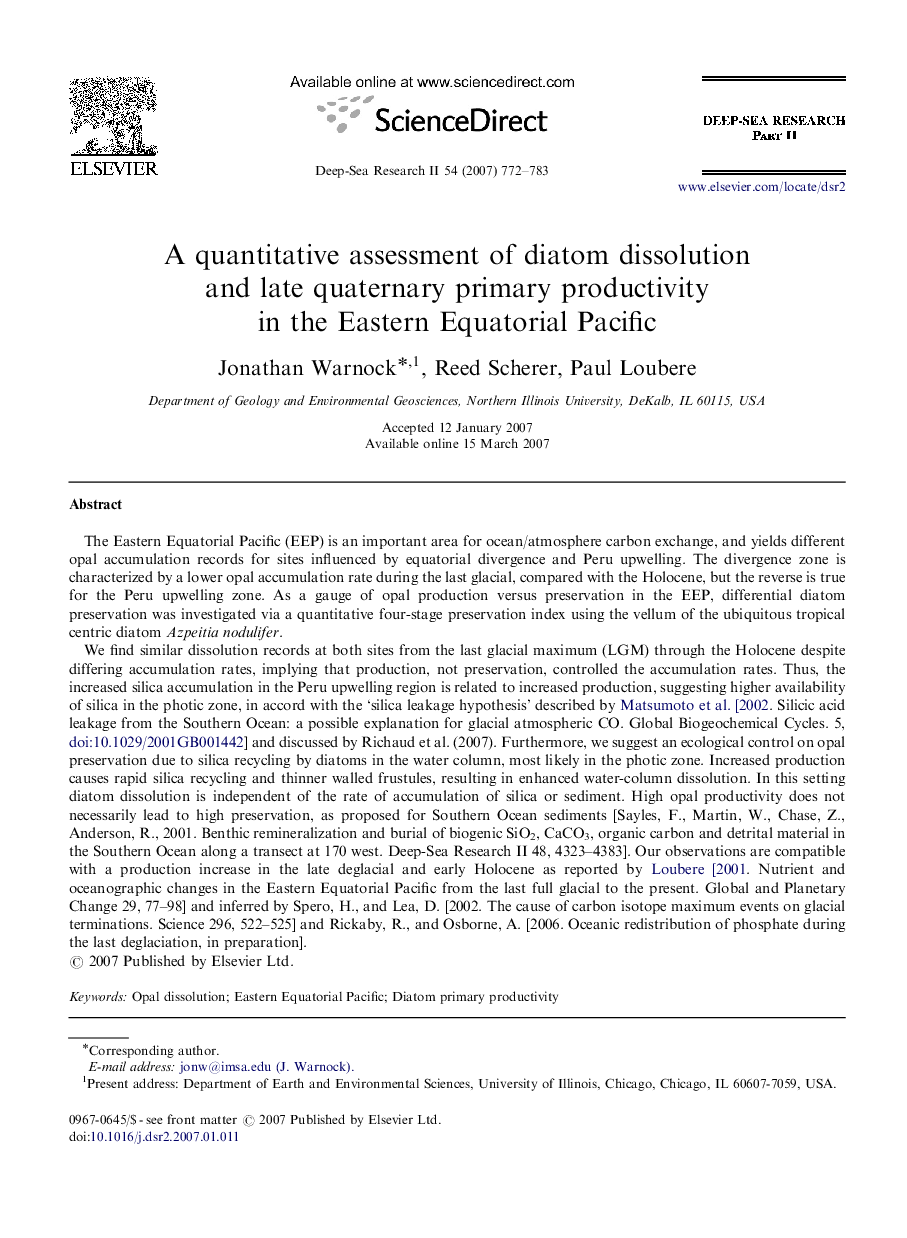| Article ID | Journal | Published Year | Pages | File Type |
|---|---|---|---|---|
| 4537646 | Deep Sea Research Part II: Topical Studies in Oceanography | 2007 | 12 Pages |
The Eastern Equatorial Pacific (EEP) is an important area for ocean/atmosphere carbon exchange, and yields different opal accumulation records for sites influenced by equatorial divergence and Peru upwelling. The divergence zone is characterized by a lower opal accumulation rate during the last glacial, compared with the Holocene, but the reverse is true for the Peru upwelling zone. As a gauge of opal production versus preservation in the EEP, differential diatom preservation was investigated via a quantitative four-stage preservation index using the vellum of the ubiquitous tropical centric diatom Azpeitia nodulifer.We find similar dissolution records at both sites from the last glacial maximum (LGM) through the Holocene despite differing accumulation rates, implying that production, not preservation, controlled the accumulation rates. Thus, the increased silica accumulation in the Peru upwelling region is related to increased production, suggesting higher availability of silica in the photic zone, in accord with the ‘silica leakage hypothesis’ described by Matsumoto et al. [2002. Silicic acid leakage from the Southern Ocean: a possible explanation for glacial atmospheric CO. Global Biogeochemical Cycles. 5, http://dx.doi.org/10.1029/2001GB001442] and discussed by Richaud et al. (2007). Furthermore, we suggest an ecological control on opal preservation due to silica recycling by diatoms in the water column, most likely in the photic zone. Increased production causes rapid silica recycling and thinner walled frustules, resulting in enhanced water-column dissolution. In this setting diatom dissolution is independent of the rate of accumulation of silica or sediment. High opal productivity does not necessarily lead to high preservation, as proposed for Southern Ocean sediments [Sayles, F., Martin, W., Chase, Z., Anderson, R., 2001. Benthic remineralization and burial of biogenic SiO2, CaCO3, organic carbon and detrital material in the Southern Ocean along a transect at 170 west. Deep-Sea Research II 48, 4323–4383]. Our observations are compatible with a production increase in the late deglacial and early Holocene as reported by Loubere [2001. Nutrient and oceanographic changes in the Eastern Equatorial Pacific from the last full glacial to the present. Global and Planetary Change 29, 77–98] and inferred by Spero, H., and Lea, D. [2002. The cause of carbon isotope maximum events on glacial terminations. Science 296, 522–525] and Rickaby, R., and Osborne, A. [2006. Oceanic redistribution of phosphate during the last deglaciation, in preparation].
